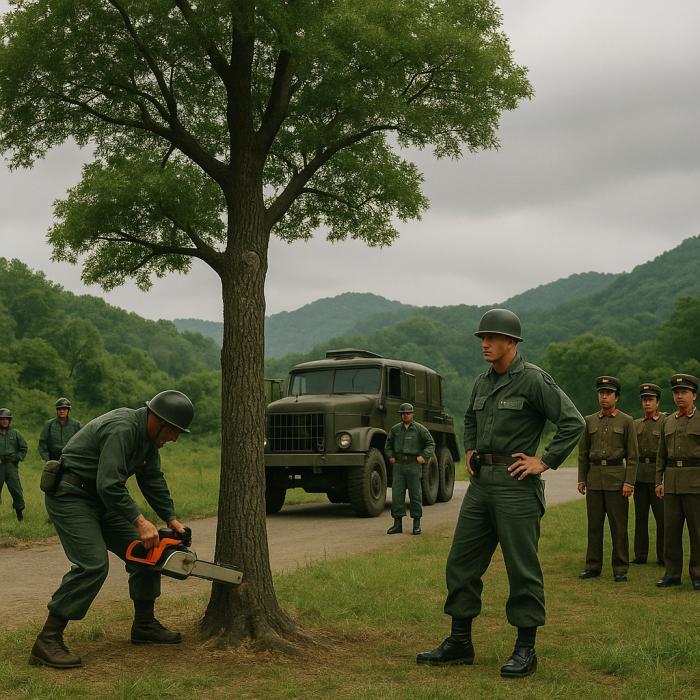3. The Tree Trimming Incident

On August 18, 1976, a team of United Nations Command (UNC) personnel, including U.S. and South Korean soldiers, began trimming a poplar tree near the Bridge of No Return in the DMZ. This routine maintenance task quickly turned perilous. As the team worked, a group of North Korean soldiers confronted them, demanding they cease their activities. Tensions escalated rapidly, culminating in a sudden and violent attack by the North Koreans. Using clubs and axes, they brutally assaulted the UNC personnel, resulting in the deaths of two U.S. officers. This aggressive act marked a significant escalation in the already volatile region.











